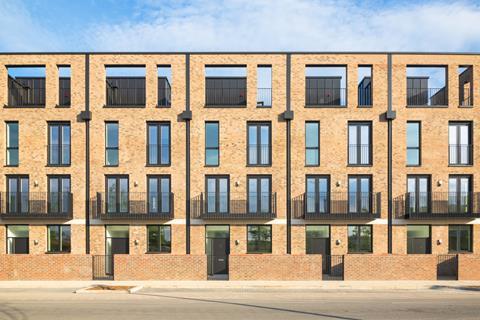Consultation on system to replace section 106 says ’extended’ pilot phase will take 10 years
The government has decided to delay the full introduction of its proposed new Infrastructure Levy by up to 10 years, causing some to question whether the policy will ever see the light of day.
Late last Friday, the Department for Levelling Up, Housing and Communities (DLUHC) issued a consultation on the Levy, which is designed to largely replace the use of section 106 agreements to secure planning contributions, in which it said it wanted to introduce it via a 10-year “test and learn” period.
The consultation also made clear the government intends the mandatory Infrastructure Levy will be charged at the point a scheme is completed, to maximise returns, and said councils would be able to require a proportion of the levy be delivered “in kind” via on-site affordable housing.

The government said it recognised that moving from the current system, whereby councils secure payments for local infrastructure and affordable housing from developers via a combination of Section 106 agreements and the Community Infrastructure Levy, to the new Levy “represents a significant change” and said previous attempts to change systems of developer contributions had been stymied by too rapid implementation periods.
“Given this combination of factors, the government will introduce the Levy over an extended period through a ‘test and learn’ approach”, the consultation said, with the levy piloted first in a “representative minority of planning authorities before nationwide rollout.” It added the “test and learn” period will last for 10 years.
The extended implementation timeframe follows concern from the industry over the impact of the policy on the housing sector, particularly in terms of the delivery of affordable housing.
In the last three years, an average of 48% of the new affordable homes built in the UK have been provided by section 106 contributions, according to government data.
Housing secretary Michael Gove said the infrastructure levy would give local leaders “the tools to bring forward more affordable housing and the transport links, schools and GP surgeries” while “putting an end to lengthy negotiations with developers [that are] seeking to shirk their responsibility to provide for local people”.
But the extended implementation period, combined with the complexity of the policy, the political situation of the current government, and the Labour Party’s opposition to it, has caused some to question whether it will ever see the light of day.
Planning consultant Catriona Riddell, also subject specialist for the Planning Officers Society on strategic planning, said: “There are questions about whether it’s going to be able to deliver what it’s supposed to deliver. It’s so complicated, particularly when you think about how this work in two-tier authorities and Combined Authority areas.
“Even assuming the Conservatives get back in, on the timescale they’ve set out, it’ll be years before they get it operating efficiently, if they ever do. People are asking is it going to happen.”
Riddell’s comments come after Labour’s shadow housing minister Matthew Pennycook last month confirmed that any future Labour government would not take the policy forward, due to fears over the impact on affordable housing supply.



























No comments yet